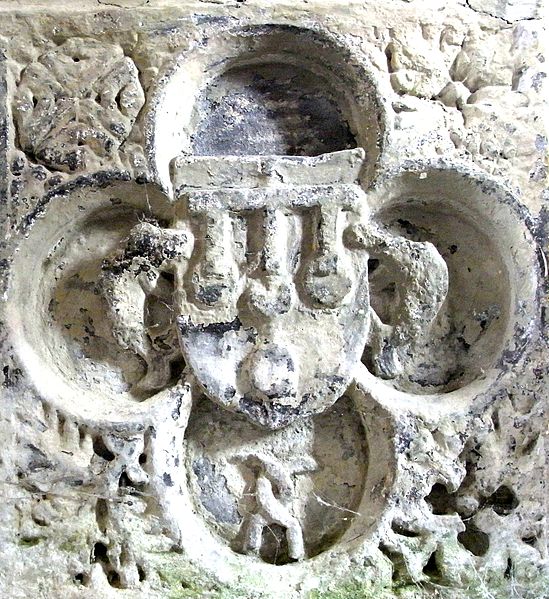The Manor of Molland was a medieval manor in North Devon, England. It was largely co-terminous with the existing parish of Molland, in which is situated the village of Molland. More accurately it consisted from the earliest times of two separate manors, held from separate overlords, later known as Molland-Bottreaux and Molland-Champson.
Text of Exeter Domesday Book of 1086
Arms of Botreaux: Argent, a griffin segreant gules armed azure
Effigy of William de Botreaux, 3rd Baron Botreaux (died 1462), North Cadbury Church, Somerset
Fragment from a demolished Gothic chest tomb in Molland Church, showing within a quatrefoil the arms of Courtenay of Molland supported by two dolphins, a heraldic badge of Courtenay of Powderham, and showing beneath two interlaced Hungerford sickles, the heraldic badge of that family
Molland is a small village, civil parish, dual ecclesiastical parish with Knowstone, located in the foothills of Exmoor in Devon, England. It lies within the North Devon local government district. At the time of the 2001 Census, the village had 203 inhabitants. Molland was first referenced as the Manor of Molland in the Domesday Book. The village contains a church dating back to the 1400s.
The village of Molland viewed from the south-east
Church of St. Mary, Molland, looking eastward over box pews
Mural monument erected in 1684 in Molland Church by Sir John Berry to his father Rev. Daniel Berry (1609–1654)
West Molland Barton, viewed from north








